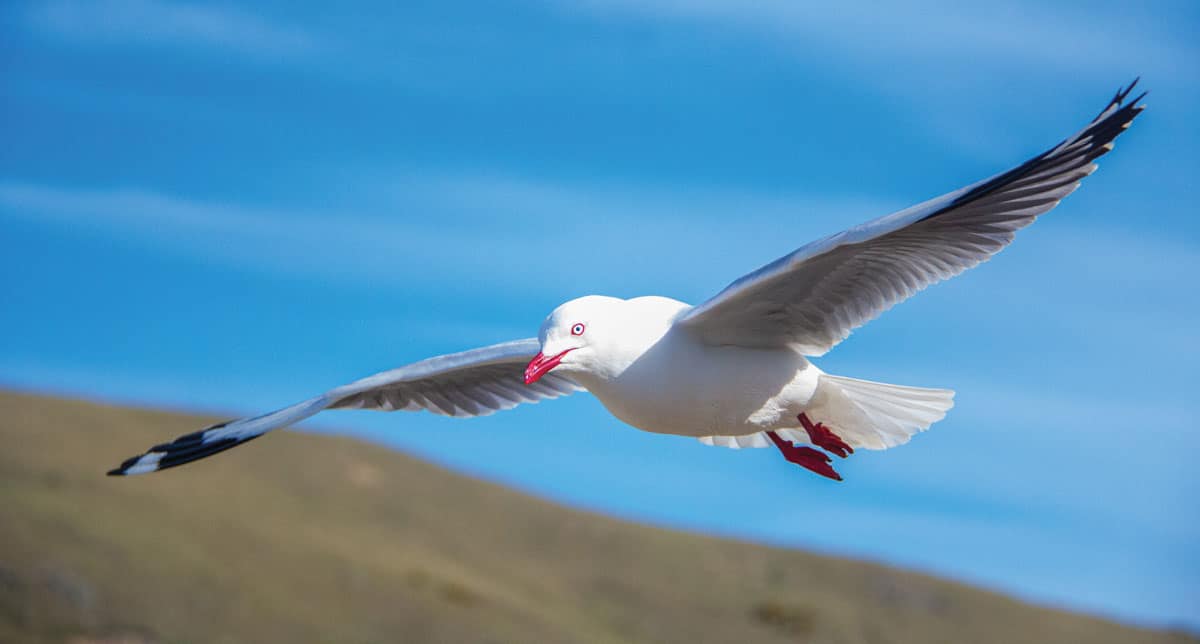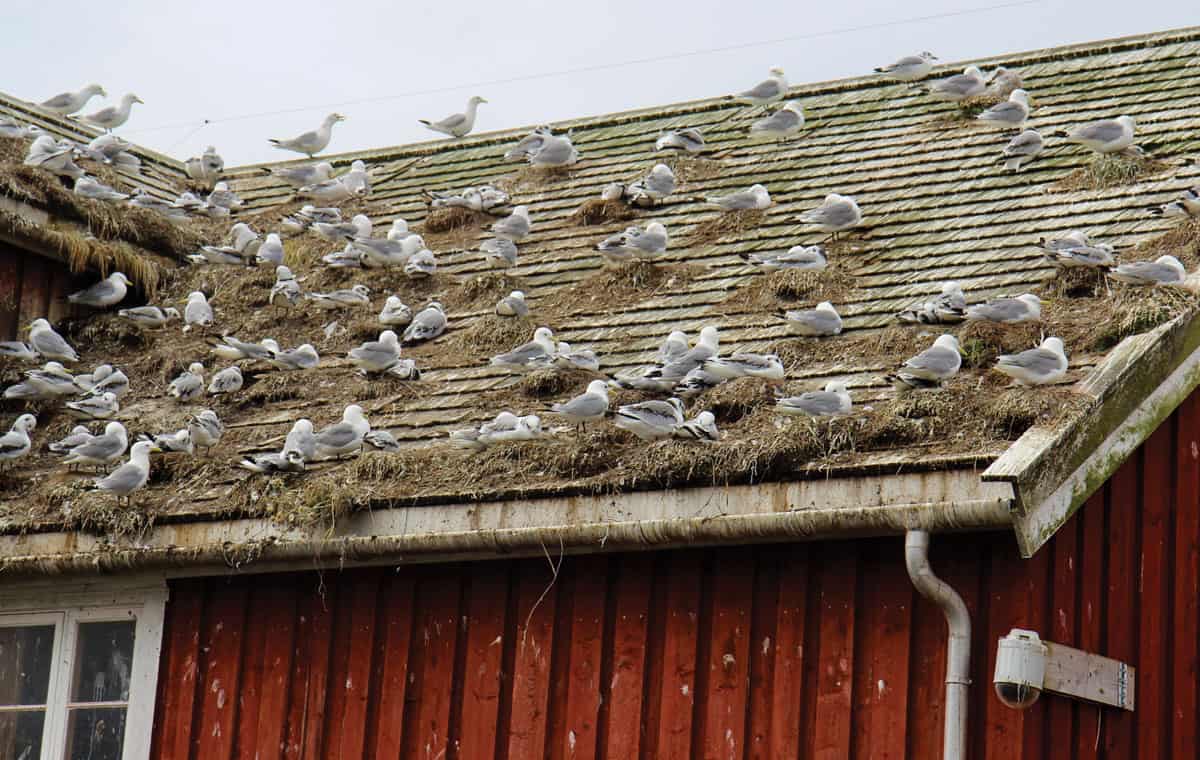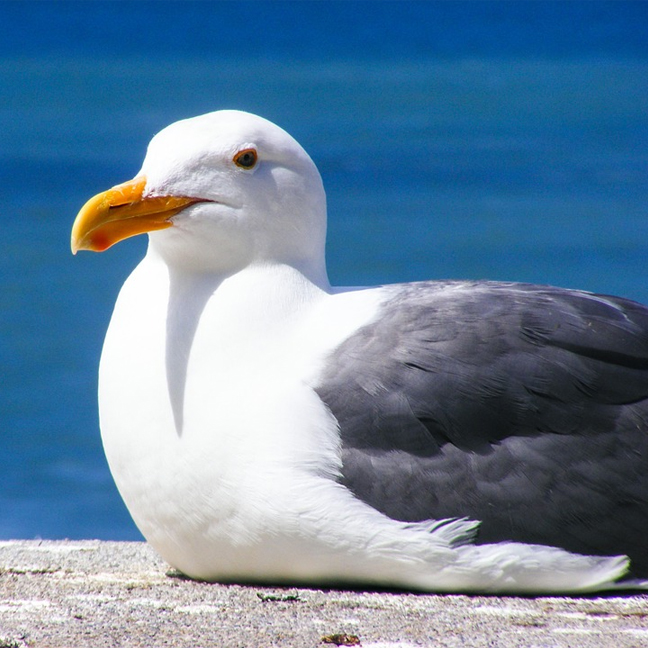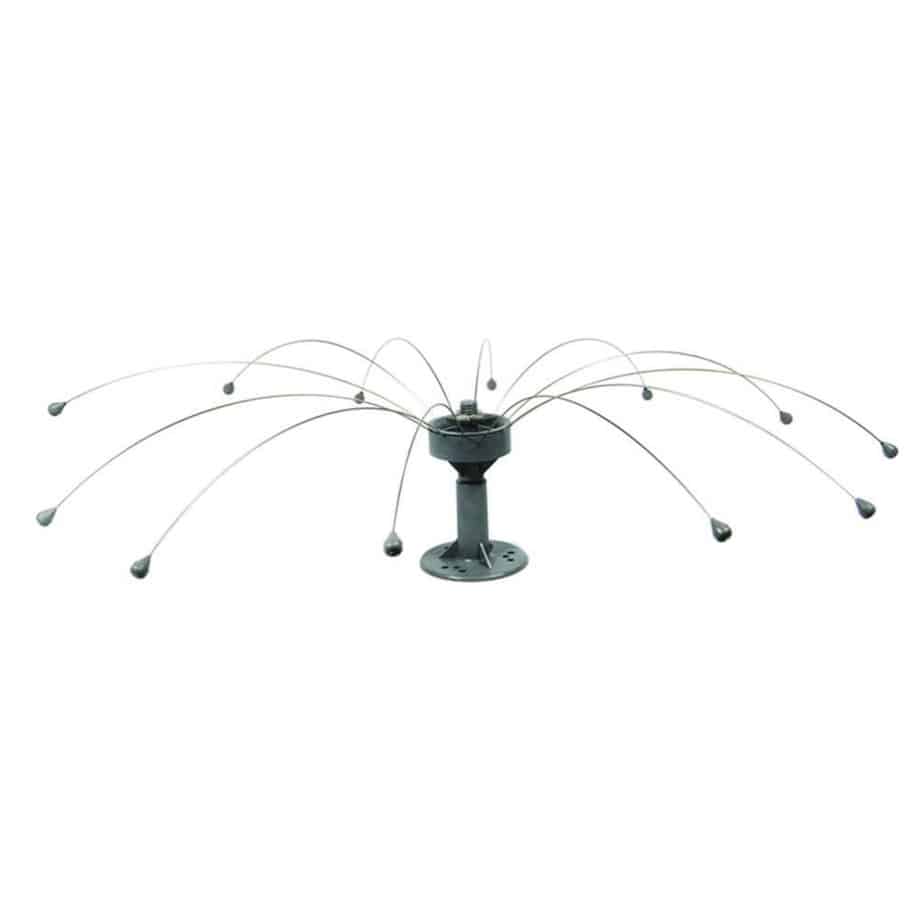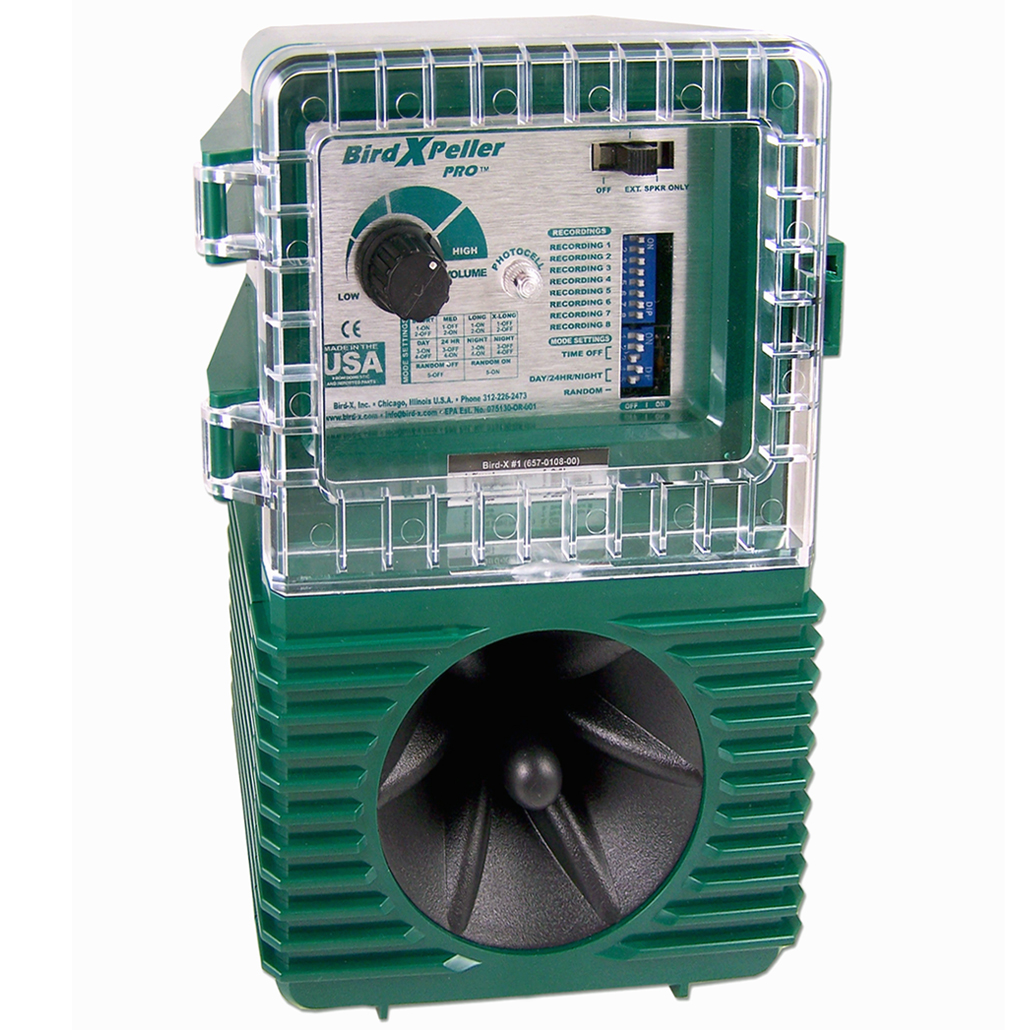Seagulls: The Most Intelligent and Resourceful Seabird (and pest bird)
By Barry Fast, President, Seagull Control Systems®
Gulls, colloquially called seagulls, inhabit all seven continents, the only seabird that is so widespread. It is the only seabird that can walk on land as easily as it paddles in the water and soars in the wind. It drinks both saltwater and freshwater, thanks to a desalination gland above its nostrils. Gulls are voracious opportunistic feeders, consuming almost any food they encounter, including ripening berries, insects, rodents, fish and shellfish, injured seagulls, KFC chicken scraps and gourmet food on trays carried by waiters to poolside guests at $500/night beach resorts. We humans produce a constantly varied seagull feast with our food waste, and they learn to adapt their food gathering behavior to our behavior. As an example, we designed and delivered a complex seagull deterrent project at a chicken processing plant where the gulls seasonally migrated between two human-produced abundant food sources. They feasted at the chicken plant from October through April, and then headed off to the seaside beach towns fifty miles away where the boardwalk outdoor dining provided leftover hotdogs, French fries and tasty fried shrimp tails all summer long. A completely man-made diet created an annual seagull migration cycle.
Despite the fact that they are superb soaring birds and swimmers, gulls never venture far out to sea. Mariners have always known they are close to their destination when they spotted gulls. After weeks at sea Columbus quelled a mutiny, promising his crew that he’d turn back in two days if they didn’t find land. The sudden appearance of gulls had assured him that land was just over the horizon, and the next day they arrived in the Bahamas. This flexibility, to thrive in environments that are completely natural or totally man-made, has resulted in today’s large urban gull colonies. These seagull infestations damage our facilities, interfere with our work and recreation, and spread pathogens such as E. coli, salmonella, histoplasmosis and numerous parasites. The CDC states “gulls are a disease vector.”
Taxonomy
Gulls belong to the Laridae family of sea birds. In North America the most common gulls, the gulls that damage property and spread disease, are the Herring Gull, the closely related California Gull, the Great Black Backed Gull, the Glaucous Gull and the Ring Billed Gull. Identifying gulls on the wing can be an inexact science because of “hybridization”, the common practice of seagulls inter-species breeding, resulting in gulls that don’t look exactly like the identification photos. This is especially common among urban gull colonies and inland lake dwelling gulls, where numerous large flocks are crowded in relatively small areas such as warehouse roofs and solar panel arrays.
Getting rid of gull colonies depends more on knowledge of gull behavior than on being able to identify gull species. For our North American gulls, it matters where they are roosting and nesting, what type of facilities they are using, how they are interfering with work or play, and what is attracting the gulls to this particular facility.
Whether the seagulls are Herring Gulls or Ring Billed Gulls, or any of the other common species, the gulls’ taxonomy is usually not a significant factor in mitigating the seagull problem. Our decisions on which deterrent or exclusion methods we use are always specific to the site, to the gulls’ behavior, and the human activities that attract them.
Nesting Season
- Gulls begin scouting for safe nesting sites in late February into March.
- They have a strong desire to return to previous years’ locations. If nothing is done to end nesting on your property, the nesting population will grow each year.
- These are flocking birds; they feel safer in increasingly larger numbers.
- Gulls mate for life and they lay two or three eggs in April through early May, depending on climate.
- Both male and female share parenting duties.
- Gestation is about 22-28 days, and the entire season, which includes feeding the babies and teaching their young how to fly, lasts about 90 days.
- The Migratory Bird Treaty Act prohibits interfering with seagulls nesting and raising their young. The USDA can issue nest and egg removal permits if the gulls are causing a health and safety issue.
- Removing eggs results in several repeated egg-laying cycles, so that is not a practical solution to the nesting problem.
- Egg removal has no effect on future nest building and gull infestations. There are more effective methods to prevent hatching. But gulls will return annually unless your facility is permanently made off-limits to seagulls.
Nesting Season Effects on Operations
Gulls are vicious toward intruders during the nesting season. In their natural world, gulls use vegetation to build shallow nests on the ground, mostly grass and twigs. On roofs, they often nest adjacent to parapets or HVAC units for shelter, which can spread disease into the building through intake vents and clog drains along the parapets with feathers, feces and nest debris. Among solar panels, their nesting may prevent technicians from servicing equipment as the gulls become very aggressive toward anyone approaching their nests or their young. Their white feces splats degrade solar power output, requiring more frequent cleaning. Sometimes they strip the caulking from parapet and roof sheathing to enhance their nests, causing leaks. I have seen them strip insulation and sealant from HVAC duct sections, allowing water and ice to get into the ducts. A/C technicians may not work during nesting season because gulls attack them, so if an air conditioning unit needs servicing it will not be operational until July at the earliest. Where nesting is taking place in large numbers, the effect on workers and visitors should not be ignored. As the fledglings begin to experiment with flying, some will fail, fall to the ground injured and slowly die or are killed by other gulls. This is upsetting to most people and can reflect negatively on the company that owns the building. The last thing you need are visits from animal welfare agencies called in by well-meaning workers, visitors or neighbors. If nesting is near traffic, the young gulls are frequently run over, causing a safety hazard as drivers try to avoid them. The most effective way to prevent this problem is to prevent nesting. We, and other bird control companies that specialize in seagulls, know how to do this.
Seagull IQ
Gulls are among the most intelligent birds. They learn from experience and teach each other, such as signaling that fish are available by flashing their wings in a specific flying pattern over the school. At low tide, they harvest mussels and drop them from heights onto docks, sidewalks, metal or asphalt roofs (creating a noise problem inside) and solar panels (cracking the shells and the panels). You can observe them learning as they increase the height of the drop until they achieve the best shell-break point.
I have seen gulls time their arrival at a solid waste landfill operation to coincide with the trucks arriving, and even staying away on weekends when there is no work going on. At a Yuma, AZ organic spinach farm the gulls arrived every day when the irrigation system was turned on. The water brought earthworms and other insects to the surface of the soil, a bountiful feast for the gulls and a contamination mess for the farmer who had to clean the harvested spinach, fouled with seagull feces, which rendered the crop unfit for the organic label. We eliminated the gull problem, and the agricultural operation regained its organic status. Outsmarting such a smart bird is often challenging, but ultimately our human brains prevailed over their bird brains.
Seagulls commonly engage in “kleptoparasitism”, a fancy word for stealing food, and not just from humans. They follow Oystercatchers, whose strong beaks break open clams and oysters. The gulls then swoop in to grab a tasty meal. I have seen them harass ospreys carrying a fresh catch, until the frustrated osprey finally drops the fish for the gulls to consume. They are cannibals too, killing injured gulls and eating them, especially fledglings.
Gulls Outsmart Most Deterrents
Anthropomorphism, ascribing human characteristics to animals, is a tempting oversimplification (OK, maybe it’s both irresistible and accurate with dogs). However, when you get to know gulls as well as I do, you can’t help but admire their street smarts, their tenacity and courage, and their incredible toughness as they endure the worst kind of weather conditions. They are the mountain men of the bird world. They ignore or quickly habituate to many kinds of deterrent products, like flashers and sprayers, ultra-sonic and conventional noise makers, and they easily discern the difference between a fake owl and a real one. I once found a gull nest built next to a seagull distress call speaker. The adjacent solar panels were covered with white gull feces. The squawking loudspeaker worked perfectly at annoying neighbors, but the gulls ignored it.
We Have Permanent Solutions
The solution to seagull problems often requires a multifaceted approach, a good understanding of what motivates these birds to colonize a variety of facilities, and a plan that transforms a comfortable, safe environment into a location that feels permanently threatening to them. If you don’t get it right, they will adapt. They have been adapting to changing conditions and opportunities for thousands of years, all over our planet. And we humans have made it easier.
Gull Problem Solver
Shop Daddi Long Legs
Shop BirdXPeller PRO
Shop Visual Scares

